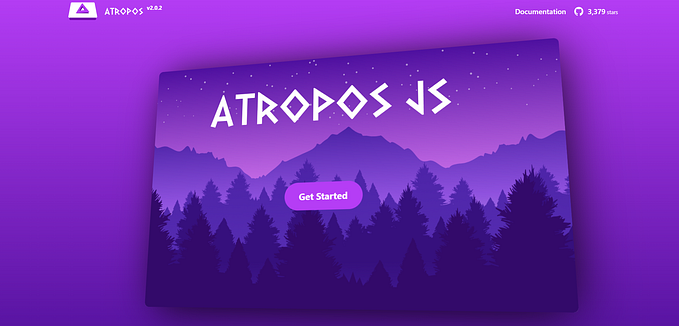The futility of labeling design roles
There seem to be more UX-related titles than Marvel movies. Is the UX Designer label still relevant or should we evolve to something else?
The latest debate in my team is about design labels. Should we stick to the traditional “UX Designer” label, or should we hop onto the flashy “Product Designer” bandwagon? It’s a bit like passionately arguing over your favorite ice cream flavor while the world grapples with more substantial issues. But, let’s face it, labels seem to hold an uncanny power in our industry.
Now, let’s rewind to the late 2000s, those good ol’ days when I proudly flaunted the Web Designer badge. Back then, I was the Swiss Army knife of design, handling everything from site architecture to front-end coding. They affectionately called this mythical being a “Unicorn Designer.” And no, there were no magical creatures involved; it was just a simpler era.
Fast-forward to today, and the tech industry has erupted in complexity. Gone are the days when one person could master every aspect of the product-building process. This complexity has spawned multiple new design titles, and some of them are as mysterious as the puzzles in Sherlock Holmes mysteries.
The problem is that there’s no official certification for these titles. Unlike lawyers, doctors, or engineers, we designers can practically slap any label on ourselves and roll with it. It’s a wild, wild west out there. An influential figure or a big-shot company sets a trend, and suddenly, everyone wants a piece of that action.

Clearly, market forces play a significant role. Innovative companies want to stand out from the crowd, so they create new design titles. Then, a designer eager to work for that company swiftly changes their LinkedIn title to align with the trend.
There is no official certification for UX related titles. Unlike lawyers, doctors, or engineers, we designers can practically slap any label on ourselves and roll with it.
If you dare venture onto LinkedIn in search of UX-related jobs, you’ll find a bewildering array of titles:
- UX Designer
- UX/UI Designer
- Product Designer
- Interaction Designer
- Experience Designer
- Growth Designer
- UI Designer
- Visual Designer
- UX Researcher
- UX Writer
- UX Specialist
- And the list goes on…
Some of these new titles make sense, but others leave me scratching my head. So, how can we get a better understanding of this labeling puzzle?
UX Specialist and UX Generalists
We could categorize the design labels into two buckets: specialists and generalists. In the specialist bucket, you’ll find researchers, writers, and visual designers. They can contribute to the entire product creation process, but their skills are concentrated in specific areas.
Then, there are the generalists, the ones responsible for the holistic experience, those who align user needs with business goals. These folks typically engage in problem discovery, solution development, and validation.
But what should be the title for the second group? For the longest time, I believed that UX Designer was the catch-all title. However, as the digital landscape evolved, the title branched into UX/UI Designer, Interaction Designer, Experience Designer, and more. Then, a peculiar thing happened: the focus on the user seemed to exclude the business side, and that’s when Product and Growth Designers entered the scene.
But here’s the real conundrum: what’s the actual difference between these titles? Is the job truly that distinct? Does being a UX Designer imply a disregard for the business aspect? Does being a Growth Designer mean visuals no longer matter?
I doubt anyone would be interested in hiring a designer who excels only in one specific aspect of the product design process.
Some argue that the UX Designer role evolved into the Product Designer, or perhaps into the Growth Designer. But doesn’t that imply that UX itself evolved? Do we genuinely need to create new labels for this?
You might disagree, and that’s perfectly fine. You might have your own definitions for these roles. And there lies the problem: there’s no universally accepted definition. So, why is this such a headache? I contend that this festival of design-related titles has consequences beyond mere confusion.
Navigating the labeling maze
Now, let’s delve deeper into the rabbit hole. There’s a glaring lack of standardized definitions for these titles. Every product and every company is unique, so no two designers perform precisely the same tasks.
Company A’s UX Designer could have a job description vastly different from that of Company B’s UX Designer. It’s a linguistic labyrinth that leaves both designers and recruiters confused, wondering, “What in the world does this job entail?”

But that’s not all. This obsession with titles can lead to a misguided focus on superficial skills and expertise. Hiring managers might be dazzled by a flashy title without truly grasping what a designer brings to the table. It’s like judging a book solely by its cover, missing out on the captivating chapters within.
The other problem is that the tech industry changes faster than a chameleon at a disco party. New trends and paradigms emerge constantly. Designers must adapt and learn continuously to stay relevant. Fixed titles can quickly become outdated, locking designers in the past and preventing them from embracing industry shifts.
In reality, titles struggle to encapsulate the multidimensional nature of design work. When you’re confined to a specific title, your growth can hit a roadblock. So, let’s put an end to this obsession with titles, shall we? At the end of the day, you’re a designer, and everything else is just noise.
Focus on what truly matters
In the British Sci-fi TV show Doctor Who, the main character, The Doctor, possesses the ability to change his physical appearance and personality through a process known as regeneration. With each transformation, The Doctor adapts strategies and tactics, but his unwavering goal remains to explore time and space, assist those in need, and contribute to making the universe a better place.
As the challenges shift and evolve, so does The Doctor, embracing change while remaining true to his core identity. Just like The Doctor, the key is to focus on the essence of your craft rather than fixating on titles.
Instead of losing sleep over titles, let’s redirect our focus to what genuinely matters in our design practice. It’s about aligning user needs with business goals, crafting memorable experiences, and achieving tangible outcomes. The challenges may evolve, but the toolkit to tackle them will always be Design Thinking techniques, Agile methods, and a Lean mindset.
Feel free to change your LinkedIn title to match market trends, but don’t lose sleep over not sporting a specific badge. If you have the inclination, specialize in a particular field. Dive into business strategy, customer research, or data analysis to expand your skill set. Don’t let a single title limit your potential. Be a designer who can adapt and flourish in our ever-evolving landscape. By remaining open to fresh ideas and approaches, you’ll stay ahead of the design game.
Ultimately, it’s not about the titles; it’s about the process and the craft. So, ditch the title obsession. Embrace the versatility that comes with being a designer. Call yourself whatever helps you get the job done. At the end of the day, it doesn’t matter what people call you; what truly matters is your ability to make a significant impact.







